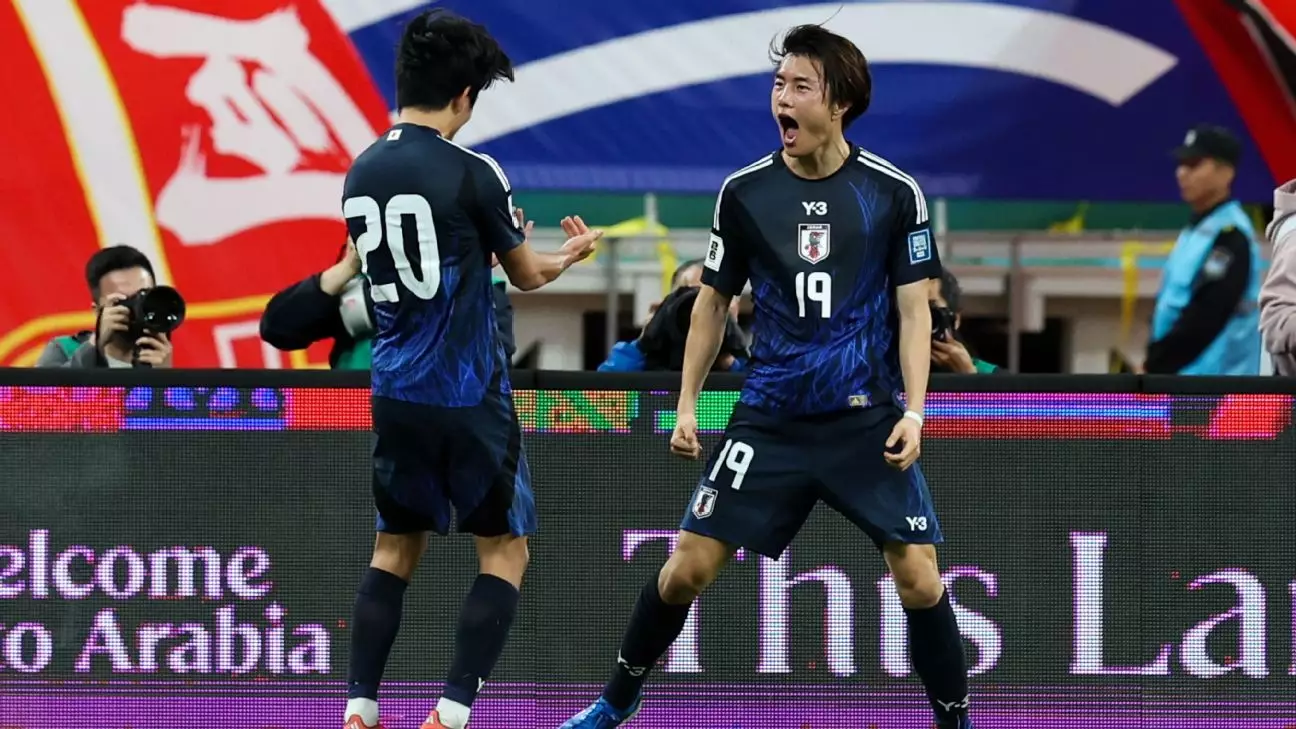As the 2026 FIFA World Cup approaches, Japan’s national football team, the Samurai Blue, stands on the verge of making history with what could be their eighth consecutive appearance in football’s most prestigious tournament. Dominating Group C in the Asian qualifiers with a commanding nine-point margin over their closest rivals, Japan is poised to cement their World Cup status as early as March 20, 2024, against Bahrain. If that matchup does not do the trick, they have a second opportunity just five days later when they host Saudi Arabia. However, merely qualifying is no longer sufficient for Japan; the expectations have skyrocketed. Coach Hajime Moriyasu has voiced ambitious aspirations of winning the World Cup by 2050, continuing the Japan Football Association’s long-term vision.
While Moriyasu’s declaration may seem bold, it mirrors a growing momentum surrounding Japanese football. Nevertheless, this higher aim brings a valuable question into focus: can Japan genuinely contend for the World Cup, or does their historical context limit their prospects? To gauge Japan’s potential, it is essential to evaluate four pivotal components: their starting lineup, depth, coaching strategies, and psychological approach.
Japan’s current squad boasts an impressive range of talent predominantly based in European leagues. The most notable players include goalkeeper Zion Suzuki of Parma, defenders such as Ko Itakura and Shogo Taniguchi, and a striking midfield led by Ritsu Dōan and Wataru Endō, among others. Their recent performances in the last World Cup, where they overcame heavyweight teams like Germany and Spain before a narrow exit on penalties, illustrate not only their capability but also their resilience in high-stakes environments.
However, despite their formidable lineup, it remains to be seen whether they can stack up against football powerhouses like Brazil, France, and Argentina on the grand stage of the World Cup. As much as individual brilliance matters, the synergy of teamwork holds paramount significance. Thus, Japan’s ability to harmonize their tactics remains a point of scrutiny. Furthermore, while Moriyasu has numerous players at his disposal, the absence of certain key figures due to injuries raises concerns about the reliability of substitutes when they face tougher opponents.
The depth of Japan’s football roster is a crucial area for consideration. While players like Daizen Maeda and Kyogo Furuhashi have garnered accolades in club football, they still have yet to make a significant impact on the international stage. The presence of veteran players like Yuto Nagatomo, now at 38, raises red flags about the overall depth. This situation is not unfamiliar to the Samurai Blue; historically, they have relied on a core group while experiencing a scarcity of dependable substitutes who can consistently elevate the team’s performance.
This oversaturation of established names atop a less-explored bench may lead to complacency among starters and stifle the competition for places in the lineup. Without an intense competition for spots, the discipline necessary for sustained excellence may falter. Japan must cultivate emerging talents and infuse them into the lineup to maintain sustained pressure and ambition within the squad.
Hajime Moriyasu is perhaps one of the most discussed figures within Japanese football. While he has garnered praise for orchestrating impressive victories, his prior counterattacking approach cast doubt upon his tactical foresight. The mixed results of his conservativeness during matches raised questions about his readiness to fully leverage the talents at his disposal.
Adapting to a more aggressive, attack-oriented philosophy appears to be a significant evolution for Moriyasu. By employing attacking players like Kaoru Mitoma and Ritsu Dōan in more versatile roles, the Samurai Blue have showcased their potential to dominate games rather than merely attempting to withstand pressure from prominent opponents. However, maintaining this bold strategy against heavyweight teams will be the true test of Moriyasu’s adaptability.
Japanese culture is long revered for its respect and humility, fostering a national football identity deeply intertwined with these values. While these traits are commendable, they must not morph into self-doubt. To rise in the ranks of global football, Japan must embrace an unyielding spirit of ambition.
Recent performances in the qualifiers reflect a more assertive mentality. In commanding wins against teams like China and Indonesia, Japan displayed a killer instinct, taking full advantage of their chances without remorse. This newfound confidence is an encouraging sign; however, the transition from regional dominance to global competitiveness requires a blend of creativity, tactical awareness, and perhaps even a readiness to play in the shadows if necessary.
Japan’s journey to the 2026 World Cup is layered with high aspirations and pragmatic challenges. While they have the talent and strategy to compete, the true test will come in balancing depth, evolving tactics, and mental fortitude. Whether they can translate their ambitions into tangible achievement when the global spotlight shines on them remains an inviting mystery. Can Japan rise to unprecedented levels, or will they merely reaffirm their historical narrative? Only time will tell.

